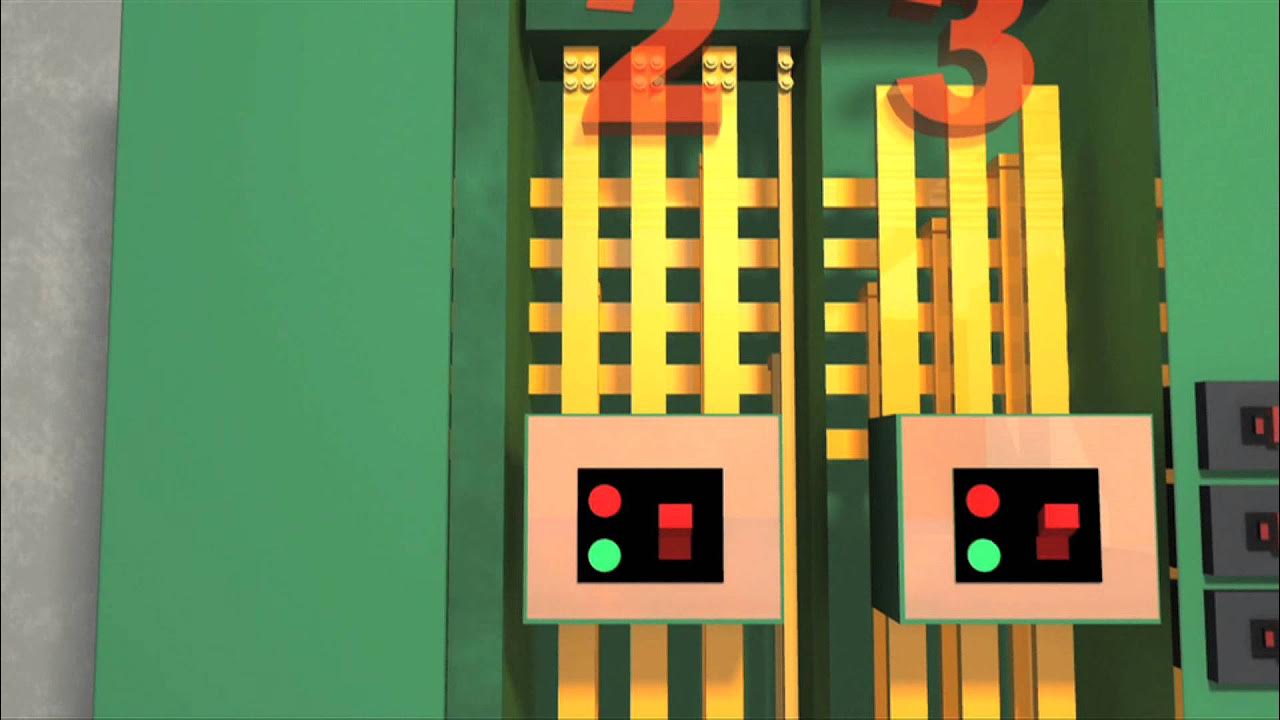Understanding an Airplane's Electrical System!
Summary
TLDRThis video explains the essential components of an aircraft's electrical system, highlighting how electrical power is generated, distributed, and converted to meet the needs of various in-flight and ground systems. It covers the use of alternators, batteries, and emergency power sources like the ram air turbine, as well as how AC and DC buses manage power distribution. The video also emphasizes the importance of power conversion, protection through circuit breakers, and monitoring systems to ensure the reliability of the aircraft’s electrical system during flight.
Takeaways
- 😀 Aircraft require an electrical system to generate, distribute, and store power while in flight, as ground-based power is unavailable.
- 😀 Electrical power in aircraft is generated by engines, auxiliary power units (APU), or ram air turbines (RAT), and must be converted for use.
- 😀 Small aircraft typically use an alternator or battery to provide DC power for systems like engine start, flight instruments, and radios.
- 😀 Power conversion in aircraft is done using transformers, rectifiers, or inverters to switch between AC and DC as required by different systems.
- 😀 Larger aircraft may have both AC and DC generators, with power distributed via an AC bus that is converted to DC through a rectifier.
- 😀 In emergencies, the aircraft's ram air turbine (RAT) or emergency generators can provide AC power, though they are less powerful than main generators.
- 😀 The aircraft battery serves as the last line of defense for power, supplying only DC power to essential systems when all other power sources fail.
- 😀 Circuit breakers (CBs) protect electrical systems from overloads, disconnecting circuits and allowing them to be reset when necessary.
- 😀 Monitoring systems in the cockpit provide real-time feedback on the status of the electrical system, including generator, rectifier, and battery health.
- 😀 Checking battery voltage is a crucial task to ensure a backup power source is available in case of a failure in other power systems.
Q & A
Why do airplanes require an electrical system?
-Airplanes require an electrical system because it is impossible to provide an electrical supply from the ground during flight. The system must be self-contained to generate, distribute, and store electrical energy.
What are the main components of an aircraft's electrical system?
-The main components of an aircraft's electrical system include the generator or alternator (for power generation), transformers, rectifiers or inverters (for power conversion), AC and DC buses (for power distribution), and batteries (for power storage).
What is the role of a generator or alternator in an aircraft's electrical system?
-A generator or alternator in an aircraft is used to generate electrical power, which is driven by the engine, the APU (Auxiliary Power Unit), or a ram air turbine.
How is electrical power distributed in a small aircraft?
-In a small aircraft, electrical power is typically distributed via a DC bus, and it is used for various systems such as engine start, flight instruments, lights, radios, and navigation aids.
What is the function of a transformer or rectifier in the electrical system?
-Transformers and rectifiers are used to convert electrical power as needed, typically converting AC power to DC power in the aircraft's electrical system.
How does the electrical system in larger aircraft differ from that in smaller aircraft?
-In larger aircraft, both AC and DC generators may be used. These generators are connected to engines, APUs, or emergency systems like ram air turbines. Power is distributed via both AC and DC buses, with power conversion between AC and DC as needed.
What is the purpose of the ram air turbine in the aircraft's electrical system?
-The ram air turbine provides emergency power generation in some aircraft by using the forward movement of the aircraft to rotate and generate electrical power, usually in the form of AC.
How is power converted from AC to DC in an aircraft?
-Power is converted from AC to DC in an aircraft using a rectifier. The AC power from the generators is fed through the rectifier, which converts it into DC power for distribution.
Why is the aircraft battery considered a last resort power source?
-The aircraft battery is considered a last resort because it provides a limited amount of power, only in DC form. It is used when other power sources, such as the engine-driven generators or APUs, fail.
How is the battery used in an emergency situation?
-In an emergency, the battery provides power to essential systems. It is connected to the DC bus and, via an inverter, can supply AC power to critical systems that require it, though the amount of power available is much less than from the main generators.
Outlines

Dieser Bereich ist nur für Premium-Benutzer verfügbar. Bitte führen Sie ein Upgrade durch, um auf diesen Abschnitt zuzugreifen.
Upgrade durchführenMindmap

Dieser Bereich ist nur für Premium-Benutzer verfügbar. Bitte führen Sie ein Upgrade durch, um auf diesen Abschnitt zuzugreifen.
Upgrade durchführenKeywords

Dieser Bereich ist nur für Premium-Benutzer verfügbar. Bitte führen Sie ein Upgrade durch, um auf diesen Abschnitt zuzugreifen.
Upgrade durchführenHighlights

Dieser Bereich ist nur für Premium-Benutzer verfügbar. Bitte führen Sie ein Upgrade durch, um auf diesen Abschnitt zuzugreifen.
Upgrade durchführenTranscripts

Dieser Bereich ist nur für Premium-Benutzer verfügbar. Bitte führen Sie ein Upgrade durch, um auf diesen Abschnitt zuzugreifen.
Upgrade durchführen5.0 / 5 (0 votes)






